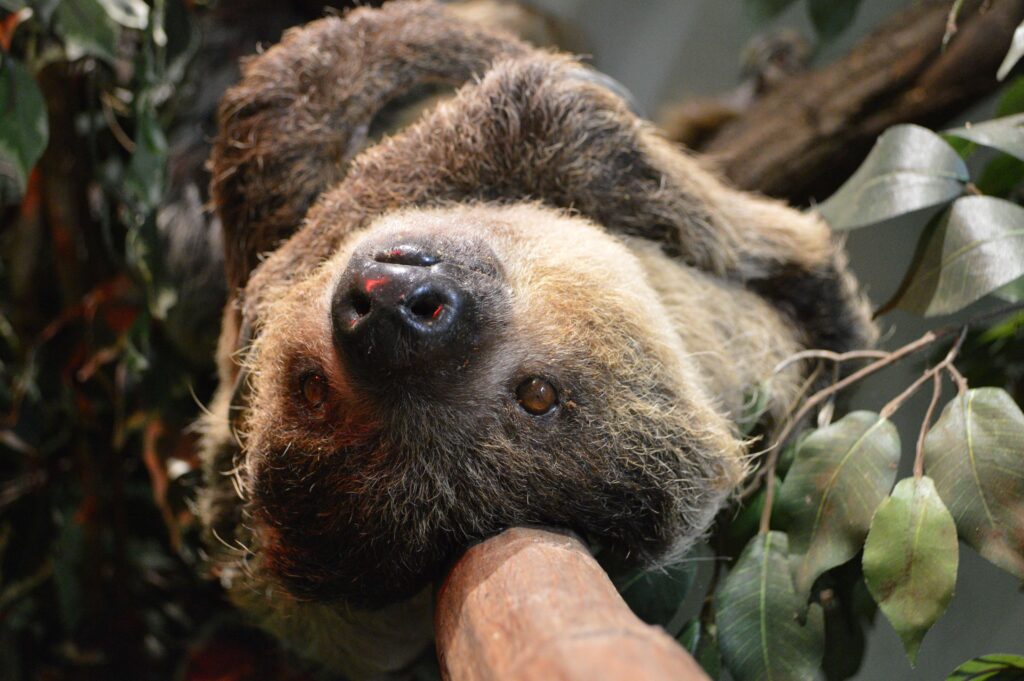Key Facts

It eats, sleep, breeds, and nurses its young in this position, but will sit in the fork of a tree but sometimes descends to the ground.
The underfur is dense, often matted, while the outer fur is finer and sleek. The hair flows back from the head and as the animal is almost constantly upside down, the body hair lies from belly to back so that the rain will runoff. Often the fur has a greenish tinge caused by microscopic plants that live on the hairs.
The sloth leaves the trees to defecate on the ground once a week in a carefully selected toilet site. It tries to avoid going down to the ground where there is a risk of predators such as jaguars and ocelots. The two-toed sloth is nocturnal, sleeping during the daytime and eating at night. They move very slowly at night, one limb at a time, but when sufficiently motivated they are capable of moving at about 1.6 km per hour.
Sloths are actually much better at swimming than walking, using their strong forefeet to propel themselves through the water, although they spend almost all of their time in the trees.

Social